Gardeners have always close attention to the colors, who were the first to dismiss their buds under the rays of the early spring sun. Typically, such plants are distinguished by subtle and fragile stems, gentle and colorful flowers and a wonderful aroma that attracts insects so much. The representative of the primrose group is a medpetian plant - a small long-term grassy culture, which one of the first is pleased with their paints and is considered the best honey.
Some time ago, this flower could be seen only on forest edges, and thanks to the great work of breeders in the culture, changed species appeared, which acquired a more decorative appearance and long-term flowering. The median is characterized by a large number of nectar, so many garden trees wear the same name, which determines their sweetness and aroma, for example, apple tree Medicarian.
In this article, consider the features of the meduse, the characteristics of the most popular varieties of this plant, as well as the basic rules of cultivation of culture.
Morphological Features and Description Medical
The median is a herbaceous flowering plant, which is considered to be perennial, and sometimes evergreen. There are all representatives of this culture to the Buryan family. Total medulla is represented by approximately 15 species that differ in the color of foliage and the shade of inflorescence. The natural habitat of this culture is considered the territory of Western and Eastern Europe, individual species can be found in Asia Minor and Eastern Siberia. This is a fairly common primrose, it can be seen one of the first after the snow gathering in our forests on shady edges, among trees and shrubs.
This plant has several names that depend on the external characteristics of the culture or its features. The scientific name of the median "Pulmonalis, Pulmo", which translated from Latin denotes "pulmonary, lung." This is due to the approval of many scientists, with the ability to use this plant for the treatment of various diseases of the lungs. On the territory of Russia most often found another name - "Medicarian, Meduska, Medicaon", which is due to the fact that this plant is the most first honeycomb and in its flowers there are many nectar. In addition to the above two names, this culture has a few more descriptive or transliteral names - the pulmonary, palmoneary, pulmonary grass, sometimes the name "Snowdrop" occurs.
A few more than a few years ago, the median was an unbroken forest flower, which one of the first appeared after the melting of snow and was famous for his aromatic nectar. It is this sweet feature of the plant gave a name to the variety of apples of a medpetian. Previously, anyone in the head did not even come to try to grow a monument on his garden plot. However, due to the strengthened operation of breeders, it is a unique and very beautiful herbaceous plant modified and became cultivated in the gardens. Scientists managed to make the leaves of wild meduse more decorative, and the flowering is longer. Due to what this flower loved to many gardeners. Today, in addition to the existing 15 natural types of medusers, there are approximately 20 decorative varieties, which are distinguished by a variety of shades of inflorescences, shape and painting foliage.
Medical Description:
- The median is a herby perennial, although there are plants that relate to evergreen.
- Root system branched with long roots and small tubers. Such a rhizome allows meduse to grow up with groups.
- The stalk of the meduse is most often a reprehensive, although in some species it can be a bit branched. The surface of the stem is covered with small vills, at the expense of which he seems to be rough to the touch.
- Soothes in height can reach about 50-80 cm.
- The leaves in meduse can be the most different shape. The root outlet of the leaves are larger and fastened with a long paper, smaller leaves are growing along the stem, which do not have a petiole and are sedentary.
- The breeders spent great work so that medpet's leaves become more decorative. In many types, leaves can be lanceal, oval, lanceolate-wedges. The edge of the leaf plate is also different - there is a smooth edge, wavy, gear.
- The most spectacular decoration of the foliage of the meduse is their shade. There are varieties with foliage in silver spots, speck, striped. Median sugar, for example, has almost completely silver foliage.
- Leaves have some omission.
- Another feature - foliage completely dissolves only after the start of flowering.
- Flowers in medpetia are different. Some varieties have small colors with short pestles and long stamens, other plants do not have such colors.
- The median has a unique feature - the colors have a property of changing their shade depending on the flowering period. These shades can vary from saturated pink to dark purple. This is due to the presence of anthocian plant, which is responsible for changing the color. At the beginning of flowering, the plant increased acidity, so pink flowers, with time the acidity decreases and the shade of inflorescence changes to blue.
- The flowering of the plant begins in April or May and lasts about 30 days, which it became possible due to the diligent work of breeders.
- After biting inflorescences, single-bedded bob appears.
- Flowers of medusers have a large number of nectar, which attracts bees.
- The leaves of this plant are used in food in the UK, where they make salads.
- In addition, the median has therapeutic properties.
Variety of types and varieties of meduse
Today, a large number of different types and varieties of medusers are presented to the choice of gardeners, which are derived from their natural varieties. In addition to the main 15 types of meduse, you can find approximately 20 decorative varieties, which are distinguished by a variety of shades of colors and color of foliage. Consider the characteristics of the most popular representatives of this kind of plants.
- Median curls. This is a very spectacular view of the meduse, although it is very rare. Medicarian Valolanoid prefers to grow in a warm climatic belt. The natural area of \u200b\u200bhabitat is the territory of Italy, as well as some areas of Northern and Western Europe. The leaves in length are approximately 20 cm, and in a width of 10 cm. The main feature of this type of medpet is a rather unusual shade of foliage. At the very beginning of the vegetation, the leaves have a dark green shade, with time silvery spots appear on them, which over time merge into one single spot and the leaves become a silver-whitish shade. The flowering of this type begins early in spring. Inflorescences appear on a long blossom, which in height reaches 45 cm. Purple-red colors.
- Median long-oil. In height, the plant can reach about 25 cm. It has very unusual leaves, which can in length can reach 50 cm, and in a width of only 6 cm. The upper part of the dark green shade sheet with silver stains, and the lower surface has an unusual gray-green . Blossom starts in April. At the very beginning of flowering, the flowers have a gentle pink shade, which over time changes to the blue.
- Nurse red. This type of plant prefers to grow on a small elevation above sea level. The natural area of \u200b\u200bhabitat is the territory of Bulgaria, Albania and Hungary. It has a long rhizome that quickly grows. Leaves of light green shade up to 15 cm long, covered with small bristles. Frequently used as a soil plant. Blossom starts in about May and lasts until the end of June, so this median is the earliest on the flowering plant, and also has a great abundance of colors. Flowers have a bright red shade.
- Medicarian medicinal. A fairly common plant, which can be found in deciduous forests from Western Europe to Siberia. A low-rise plant, which in height can reach about 10-13 cm. It is characterized by a black rhizome, characterized by a strong branching. The leaves have a heart-shaped-shaped shape, dark green with whitish spots. The leaves begin to form after the start of flowering. Blossom starts approximately in May and lasts 25-30 days. Flowers at the very beginning of a red shade, which over time changes to a lilac. The look of frost-resistant, can withstand cold until minus 35 degrees.
- The median is good. At the height of the plant of this species reach approximately 50 cm. The leaves in the meduse of gently appear gradually during the entire season. Blossom starts at the end of April and lasts until mid-July. May begin to re-blossom in September. Flowers are quite large, blue-purple shade.
- Median sugar. The low look of the plant, which is used as soil. Quickly grow up and forms a dense carpet. Fox evergreen. Flowers in spring with a large number of colors that change their shade with carmine to violet.
Popular Garden Merissaries:
- Berries and cream - the leaves of this variety have a pure silver shade.
- Golden Haze - is distinguished by the presence of yellow cuts around the edge of the petals.
- MRS. Moon - This plant has lush foliage and beautiful red-purple shades.
- Silver Shimmers - the foliage of this medpet has a curved wavy edge.
- Dora - During flowering on a plant, light-pink flowers bloom.
- Little Star - the leaves of the median of this variety have a white border and whitish-silver spots over the entire surface of the plate.
Medication reproduction: the most common ways
Medunication is just enough to dive alone at home. For this, it is only necessary to know the most common methods of breeding. The following are characteristic of this culture: seed reproduction, reproduction of the division of the bush and the reproduction of rhizome segments. Each of the listed methods has its own characteristics and nuances that must be taken into account in order to further get a beautiful and healthy plant.
Seed reproduction of meduse
- Seed reproduction is extremely rare, as it is simply impossible to maintain the varietal signs of decorative types of meduse. With this method, it is possible to get a completely new plant with an unusual color of foliage and colors.
- In addition, blossoming of the meduse, planted with the help of seeds, will begin only in 2-3 years.
- Most often with the help of seeds are bred by the nice.
- It is important to remember that seeds for sowing are collected in the same year that it is planned to plant a medberian. This means that the planting material must be completely fresh.
- Do not be surprised if you find medelian seedlings at the other end of the garden or flower garden. Seeds of this plant often spread ants. Such seedlings can be successfully digging and transplanting to a permanent place.
- With independent sowing, freshly collected seeds must be sown in the prepared ground, which should be loose and easy.
- After some time, the first shoots will appear, which requires close care in the form of irrigation and soil loosenings.
- After the appearance of the first strong leaves, the seedlings must necessarily dive at a distance of 6-7 cm from each other.
Medication reproduction of the bush
- This method of reproduction is the easiest and most common, since in its process you can save all maternal varietal signs of meduse. An important feature of this method is the fact that dividing the bushes of an adult plant can be used in the entire season, both in the summer and in the fall. However, on the advice of experienced gardeners, it is best to do this in early spring until the moment of active vegetation.
- In this way, the following types of meduse are most often multiplied by the following types of meduse: a long-wave sugar monetary monument.
- In the spring it is necessary to neatly dig up an adult medulla bush and slightly shaky with the roots.
- After that, a sharp knife or secateur is divided into the desired number of parts, each of which cuts a little. It is important that every Delleka has a healthy replacement kidney.
- Next, young plants must be planted at a decent distance from each other. It is approximately 30-35 cm.
- When transplanting Dellek, take into account that it is necessary to plunge them into the soil on the same depth as the adult plants before division.
- After planting the soil around young plants, it is necessary to inspire.
- It is recommended to divide the stories of medusers once every 3-4 years, since during this time the root system of the plant grow greatly, young processes appear, and the old roots are gradually die away.
Medication reproduction with rhizome cuts
- For such types of medusers, as a red, drug, narrow and void is characterized by a method of reproduction using rhizome segments.
- By the end of the summer, the root medulum system is very growing, individual rhizomes penetrate into different directions. It is at this time that at the end of the season can be done by separation of the root part.
- To do this, you need to take an acute shovel and quickly cut off several parts of the root. It is important to ensure that each segment has the soil of resuming growth.
- Prepared planting material immediately need to land on the site. The distance between the segments should be approximately 15-20 cm, since these types of medusers grow very much.
- Blowing parts of the root is recommended about the depth of 3-4 cm.
Preparation before landing a medberian in open ground
The median is an unpretentious plant, but its full growth and flowering will depend on careful preparatory work. No wonder experienced gardeners say that it is enough to choose the right place to plant meduse and further care for the culture will not be any ore and will not require any other labor costs. In addition, it is important is the acquisition or breeding of high-quality and healthy planting material.
Selection of varieties and medberia seedlings
- Special attention is paid to the selection of planting material, which will depend on the full development of the plant.
- The planting material can be prepared independently if representatives of this plant are already growing on your site. Or, as an option, the decene can be asked from acquaintances.
- If you first thought about planting this unusual blooming grassy plant, then it is best to turn to professionals. It is suitable for garden centers or agrofirms that are engaged in breeding a plant.
- Preferred varieties that are successfully constructed in the climate of your region. Such seedlings are better rooted and will be sick less.
- Before buying, be sure to consult from professionals about all nuances of landing and care for a specific variety of meduse.
- If you purchase ready-made medullary seedlings, you should not be afraid of a little sluggish, after planting a plant will go away.
- The main thing is that the seedlings you choose are healthy, without visible damage and yellow foliage.
Choosing a place to land a medberia
- With special care, look for the search for the most suitable place to land the medianship. It will be the key to the right landing and minimizes your care work.
- The median is unique in that it can grow perfectly in a light shadow in a complete shadow, while completely without lacking in the sunlight. It is in such places that the plant shows all his bright colors, foliage looks more beautiful with unusual drawings.
- Try to find in your garden just such a place. If you did not find the shady places, take the beds for a medpetum under large trees or among shrubs where the shadow is present at least at noon.
- These plants do not wear moisture stagnation, so do flower beds for them on a small hill.
- The median is primrose, so it will be great to look with other spring flowers on the flower beds and in flower beds.
Choosing and preparation of soil for landing meduse
- For the landing of the median, loose and light alkaline or weakness soils are perfect.
- It is also important to take into account that the soil is rich in nutritious humus.
- If there are no such soils on your site, the poor are also suitable. You will have to constantly make the organic and full mineral fertilizers.
- Before boarding it is important to carefully switch and explode the selected area and completely remove all weeds. At this stage, you can add humus and complete mineral fertilizer to the soil.
Landing medusers in open ground - step-by-step instruction
- The technology of landing of medusers in the open ground is not distinguished by difficulty, even newcomers in gardening will cope with these simple actions.
- Optimal time for landing meduse to open ground - Spring.
- At a pre-prepared place, it is necessary to make landing wells that should be located at the right distance from each other. PR dropping a few seedlings wells to do 20-25 cm from each other.
- At the bottom of each well, you can place a small layer of drainage, if the selected area is observed moisture. As a drainage, small stones or large and pure sand can be used.
- Purchased seedlings in containers must be accurately removed from the soil, trying not to damage the roots and stem.
- Place the planting material in the wells and carefully suprate the soil, sealing it with his hands.
- After landing, you can pour out young plants a little, but in the future it is not necessary to do too often.
- At the end of the soil around young plants, it is recommended to inspire to prevent the evaporation of moisture.
How to care for meduse
If you choose the right place and landed, the care of the meduse will be minimized.
- Watering. Median prefers abundant and regular watering, but it is necessary to follow, so as not to pour a fragile plant. It is important to choose the most optimal watering mode, which will approach the soil on which the median grows. You can focus on the state of the top layer of the soil. It is necessary to water with a slight soil dried.
- Loosening and mulching. The median prefers to grow on loose and light soils, so regularly it is recommended to carry out the upper layer. This will ensure oxygen access and make the soil more penetrated for moisture. After loosenings, a mulch can be added, which will prevent the evaporation of moisture.
- Feeding This plant reacts well to the application of fertilizers, especially during the period of active buildup of the green mass and the formation of buds. As fertilizers, mineral complexes and the organic can be used, which is scattered around the plants. Undercumation can be drawn by the leaves and flowers of meduse.
- Common care. It is important to periodically inspect the plant and remove the sluggish and damaged leaves. It is also recommended after the end of flowering to completely cut all the blooms, since the seeds can be scattered around the plant, which will lead to the appearance of new unwanted plants.
- Fighting diseases and pests. The positive quality of the meduse is its resistance to diseases and pest appearance. Sometimes slugs can be seen. So that this does not happen, it is important to regularly remove all weeds and follow the watering mode of the plant.
- Wintering meduse. Almost all the varieties of medusers exceed our strength frosts. For them, it is enough to climb the soil with peat or cut-off foliage and patterns of the plant itself. The medusers of the narcotic median will need a more careful shelter, which should consist of a good layer of mulch and fabric from above.
Medical Photo Photo
Beautiful and gentle primroses always make an eye and fill with a sense of joy and waiting for a miracle. This is due to the fact that they are one of the first awakens after winter sleep. Having put on his port to the Medunication, you will always meet the spring with a smile, as the bright flowers of this plant are the first to decorate your garden or flowerbed.

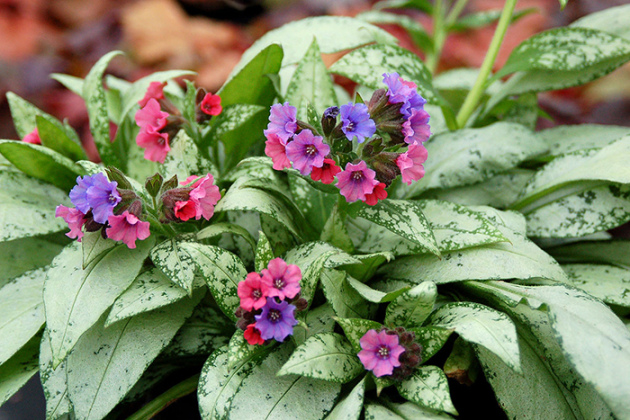
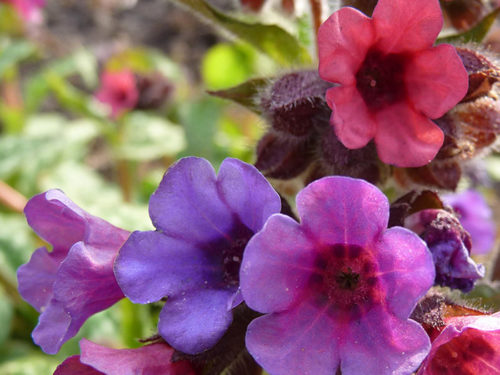

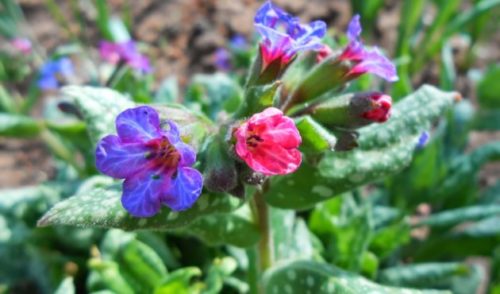
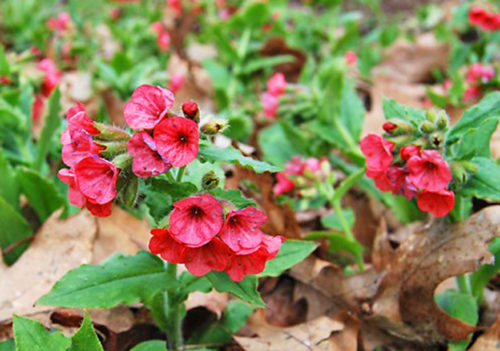
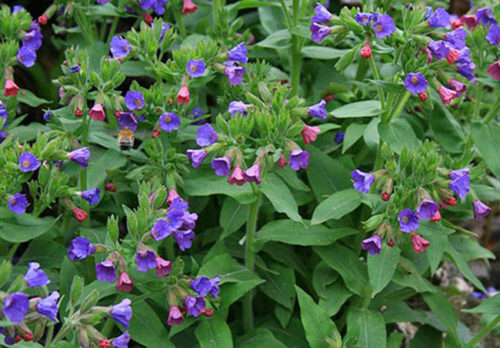

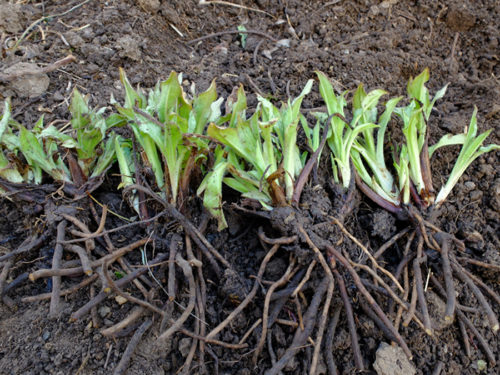
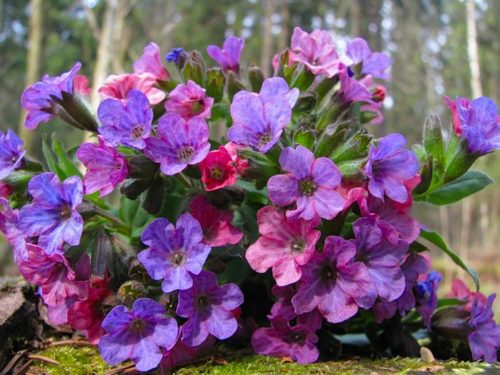
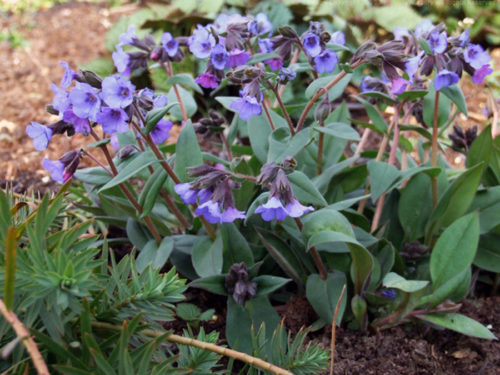
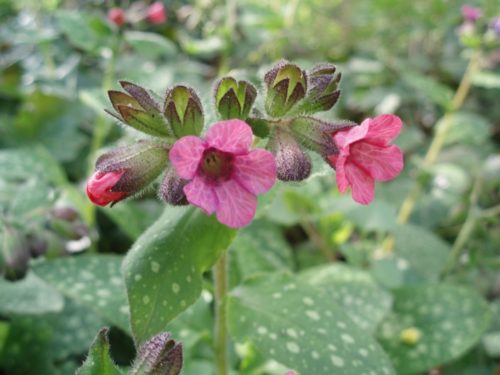
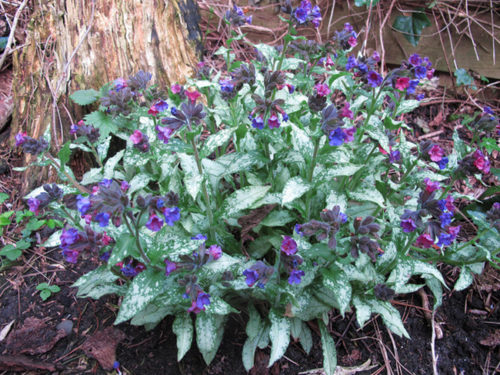
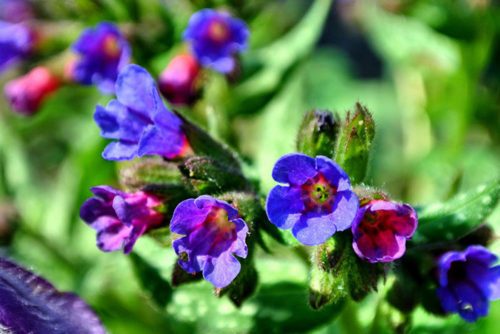
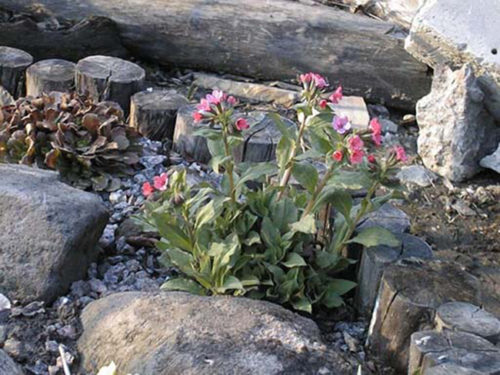












 Start a discussion ...
Start a discussion ...